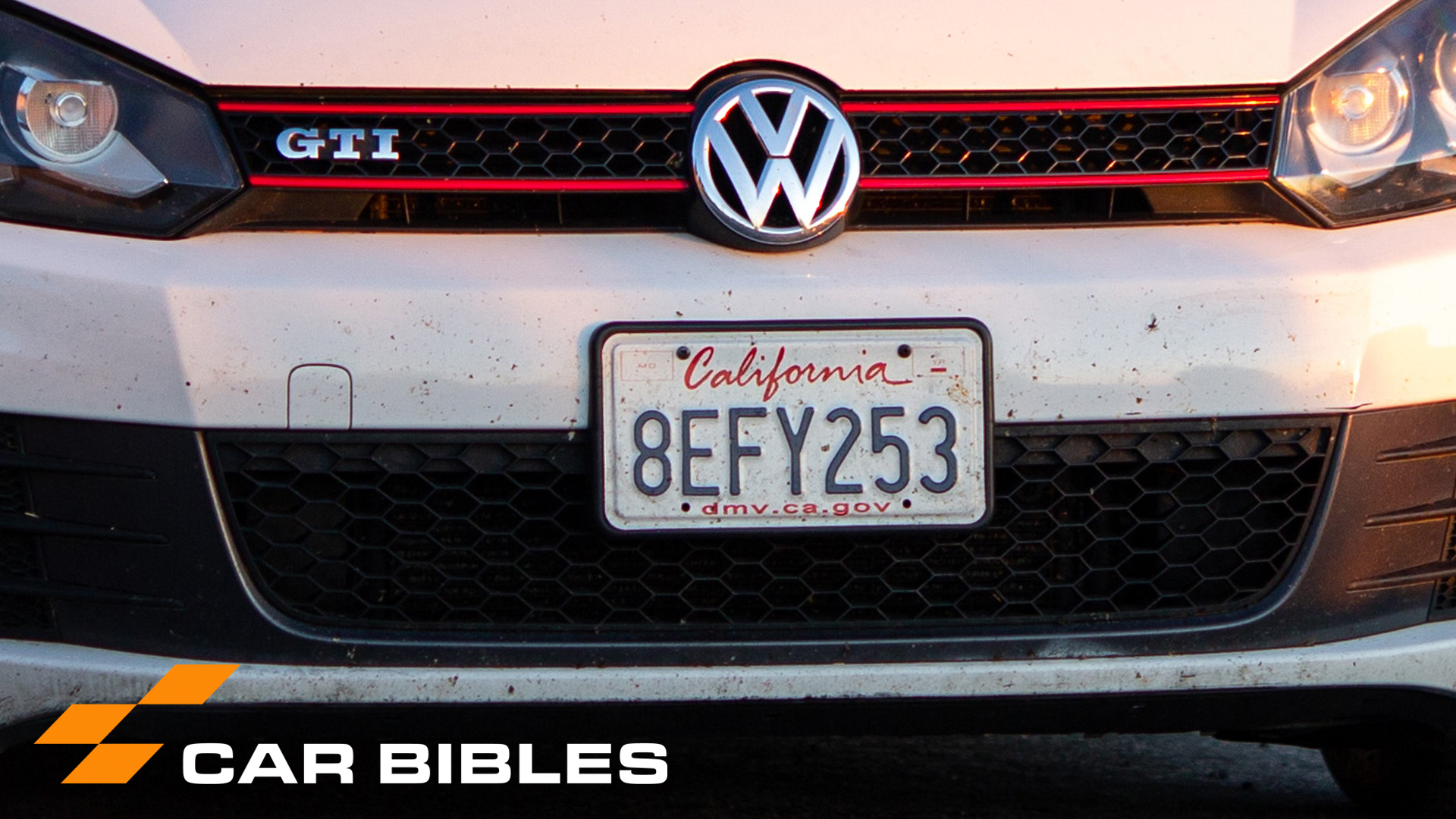

We’re not here to sleuth personal info on car owners (so you can stop putting your finger in front of your tags in your Craigslist pictures), but a California license plate number can help you get at least a little insight into what sort of life the car wearing it has led.
Car Bibles is a new sister site to The Drive focusing on DIY culture, pro tips for maintenance and modifications, and fun takes on the car scene. Click here to check it out!

Many great tools exist to aid the modern compulsive car buyer (or, even, regular people looking for wheels). Carfax, VIN decoders, Google, and phone flashlights have helped our generation of hooptie-loving enthusiasts make terrible (smart?) purchases. One of my favorites helps in my home state of California—you might be surprised what you can extrapolate from a simple license plate number.
The California plate system is a pretty specific one. It works sequentially, a seven-digit sequence counting up from 1 since 1980. The sequence theoretically starts with a plate of 1AAA000, and goes to 1AAA001. Get it?
The first few years of the sequence moved a little slower, because there were simply fewer vehicles being registered 30 years ago. Now, most of the cars you might be looking to buy are going to have a 4-plate, meaning that the plate will look like 4AAA000. The California 4-plate is of the late ’90s and early ’00s vintage, and will usually be the original plate of any car from that era.

Why does that matter? Well, an original plate on a given car usually means that the vehicle is with its original owner, or has only changed hands privately. When a car enters a dealer system, it’s sometimes re-plated, especially if there was any lapse in registration. The new plate is issued as a new number in the registration sequence.

When a car only changes hands between private parties, like if I sold my Mk6 GTI to my colleague Andrew who’s also in California, it’d keep the same license plates it currently has. Side note: Some states make you get new plates any time a car changes hands.

Back to our California example—a 1998 Lexus GS400 should have a 4-plate. If the car was traded into a dealership around 2017-present, the new plate will be an 8-plate. So instead of 4AAA000, it will be 8AAA000. Ew, that’s ugly. To boot, cars registered in CA from late 1998-2000 received a “sesquicentennial” plate. Instead of a blank space, the bottom of the plate read “Sesquicentennial – 150 years” to commemorate the state’s 150th anniversary. After the sesquicentennial plates, the bottom of the plates read “DMV.CA.GOV,” which is somehow even lamer.
Let’s chart it:
1980-1994: 1-plate, 2-plate, 3-plate (you won’t see these often)
1995-2002: 4-plate
2003-2013: Early 5-plate, mostly 6-plate
2014-2016: 7-plate
2017-present: 8-plate
All you have to do is see if the era of your car and plate match up, and you get to add one more little piece of the puzzle to your car’s ownership history.

I know it bugs me every time I see that my 2010 VW GTI has an 8-plate when it deserves a 6-plate. So I ordered a personal plate for it, but that’s a story for a different time.
Generally speaking, an original plate is an overwhelming sign when you’re looking at a car. It likely indicates a consistent ownership history, no dealer abuse or neglect, and has the bonus of being intensely cool to weirdos like me. It isn’t a deal-breaker for a car to have a newer plate, but it’s something to consider when holes in ownership history can’t be answered.
Happy car nerding, and I hope that I’ve broken our Californian reader’s minds enough to start scanning every plate!
Correction Tuesday, March 9, 2021, 4:190 p.m. ET: We originally wrote that cars are always re-plated when they get moved through a used car dealership, but that’s not a given.
Chris Rosales is a writer at Car Bibles, a new sister site to The Drive focusing on practical tips and DIY advice to help you get the most out of your car. Come see the freshly redesigned Car Bibles right now! Or check us out on Twitter, IG, and Facebook. Actually LinkedIn too, if you’re on there.